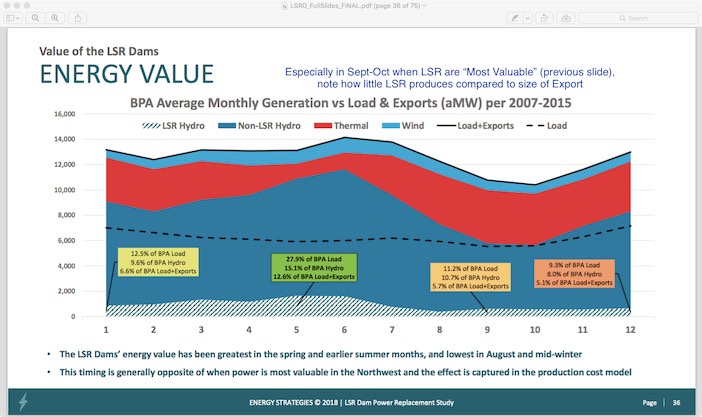forum
library
tutorial
contact

Report: Drawdown May
Threaten NW Power
by Associated Press
Walla Walla Union Bulletin, January 12, 1997
|
the film forum library tutorial contact |

|
Report: Drawdown May
by Associated Press
|
"We do want to support saving the* salmon, but we don't want to change
our lifestyle to the degree that we don't have irrigated agriculture,"
 HERMISITON (AF) - A proposed drawdown of the pool behind John Day Dam to help salmon would threaten the Pacific Northwest's power supply and eliminate an important flood control measure for the Portland-Vancouver area, says a new report commissioned by local utilities and irrigators.
HERMISITON (AF) - A proposed drawdown of the pool behind John Day Dam to help salmon would threaten the Pacific Northwest's power supply and eliminate an important flood control measure for the Portland-Vancouver area, says a new report commissioned by local utilities and irrigators.
The report also said the proposed drawdown would mean less water for irrigation and barge traffic.
As part of a plan to help endangered salmon, the Northwest Power Planning Council's Independent Scientific Advisory Board in September recommended lowering the portion of the Columbia River between John Day and McNary dams (aka. John Day pool) to natural river level. That would be 80 feel below its current level of 262.5 feet above sea level.
The report, prepared for seven utilities and irrigators that make up the Tri-Cities-Hermiston Group, said the proposed drawdown would mean the loss of .$255 million in energy production and translate into higher electric rates and more power outages in the region.
A drawdown would threaten the stability of the Northwest's power system by limiting the amount of power that can be transmitted through the system's "Intertie," the high-voltage transmission line that moves power between the Northwest and California and the South west, the report said. This would in crease Northwest power outages, it concluded.
The group plans to present the findings to the planning council later this month. Members of the Tri Cities-Hermiston Group include the Umatilla Electric Cooperative, the Benton Rural Electric Association, Franklin and Benton County public utility districts. Columbia Rural Electric Association and the Columbia Snake River and Eastern Oregon irrigators associations.
"We do want to support saving the* salmon, but we don't want to change our lifestyle to the degree that we don't have irrigated agriculture," said Pamela Harrington, director of communication ind marketing for the Umatilla co-op.
The nine-page report was written by Russell George, former manager of the U.S Army Corps of Engineers Reservoir Control Center.
George said a drawdown would affeet flood control because less water could be stored in the reservoir. John Day Dam, near Rufus, is the closest dam to Portland with flood control capabilities.
During last February's flooding, the dam held back 70,000 cubic feet of water per second for two days, lowering the river level al Portland by up to one and a half feet, the report said. Returning the river to a natural level would remove the deep-draft channel that allows about 9 million tons of materials to be barged up and down the Columbia every year, George wrote.
"All indications are that any deep drawdown of the John Day Pool would have severe impacts on many important elements of life as we know it in the Pacific Northwest," said Steve Eldridge, general manager of the Umatilla Electrical Cooperative Association.
learn more on topics covered in the film
see the video
read the script
learn the songs
discussion forum
